People
Why the Art World Should Be Freaking Out About Rei Kawakubo’s Met Retrospective
And why the fashion world has gone bananas already.
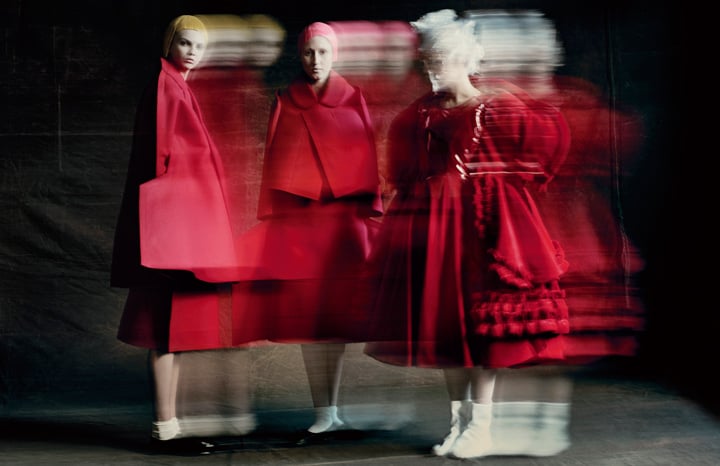
And why the fashion world has gone bananas already.

Max Berlinger

The last time New York’s Metropolitan Museum of Art honored a living designer with a retrospective, the year was 1983, and the designer was Yves Saint Laurent. It has taken a whopping 33 years for the institution—and Anna Wintour, the Vogue editor pulling strings behind the scenes—to deem another talent worthy of such an honor. This week, Rei Kawakubo will become the second living designer to have a monographic show inside the hallowed halls of New York’s largest museum.
But Kawakubo is nothing like Saint Laurent. He was showboating couturier from the old school of fashion where grand proclamations were made in brocade, silks, and bolero jackets. She is a taciturn 74-year-old Japanese designer at the helm of the avant-garde label Comme des Garçons. The show includes approximately 150 examples of Kawakubo’s womenswear designs, from the early 1980s to her latest collection.
It’s no secret that some members of the art world are transfixed by Kawakubo. Can you blame them? She’s an iconoclast who fits no mold and has no interest in explaining herself. She’s out to break rules and expand our understanding of what clothes are and what fashion can mean.
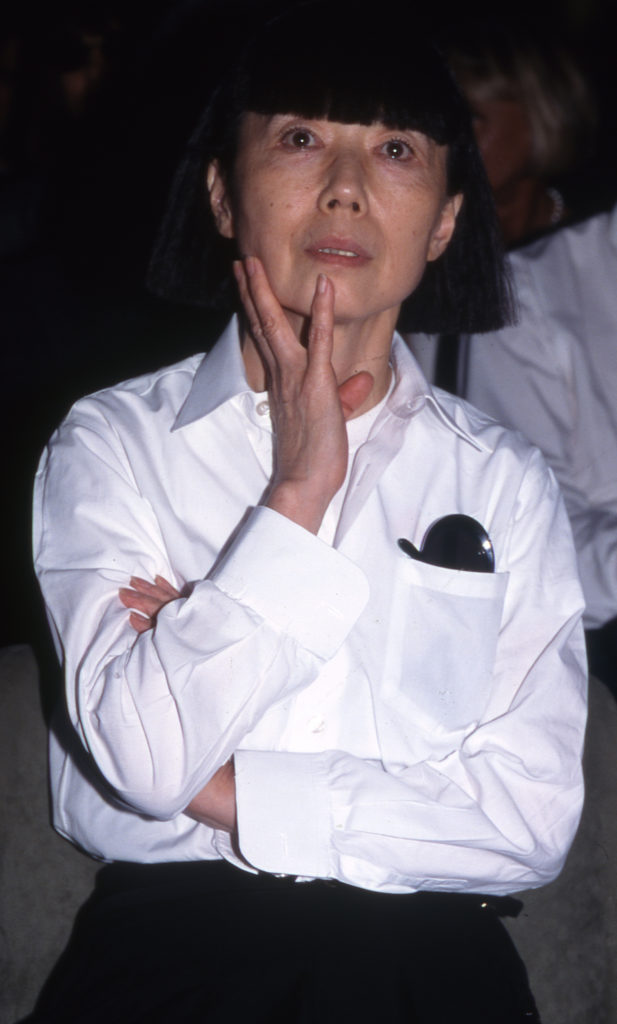
Rei Kawakubo in 1998. Photo by Rose Hartman/Getty Images.
Yet she was not always so universally admired. When Kawakubo first arrived on the international stage, in Paris in the early 1980s, her style sent a bolt of lighting across the fashion system, causing panic, confusion, and anger. At the time, the fashion world was still experiencing a hangover from the sexy glamour of the ‘70s and heading into an era of over-the-top opulence, thanks to the robust ‘80s economy. Kawakubo’s look was decried as “bag-lady chic,” an affront to dominant Western beauty ideals.
That’s what happens when you try to show the world something new: it resists.
For all the newness the runways espouse—the new “it” bag, the new silhouette, the “new take on minimalism”—designers almost always offer the same old stuff. If we’re lucky, that stuff has been tweaked just enough to give it the sheen of novelty, a little something to quicken the pulse when you’re deciding whether to part with some hard-earned cash. Perhaps there’s not much more you can ask. Because at the end of the day, fashion isn’t art. It’s an applied art, sure, but there are certain restrictions and mundane technical considerations for which the designer must always account.
You need to cover the torso and allow a place for the head; two holes, strategically placed, for the arms. Skirts can be A-line or drindle or pencil in shape, but if they don’t allow room for a person’s legs—and a little freedom of movement—you might as well pack up your pencils and go home. You’ve failed the assignment.
Rei Kawakubo is different. She makes things that are new—actually new. She makes upsetting, strange things that can barely be classified as clothing. Her clothes are something closer to sculpture—they just happen to use the body as a foundation. Her designs are unencumbered by historical allusions or “inspirations,” a favorite crutch for many designers.
I remember the first time I discovered Kawakubo’s spring 1997 collection, officially titled “Body Meets Dress, Dress Meets Body,” and popularly referred to as the Lumps and Bumps collection. The designer added bulbous mounds of stuffing, like overgrown tumors, to dresses made of coquettish gingham. In the process, she disfigured the body’s natural silhouette.
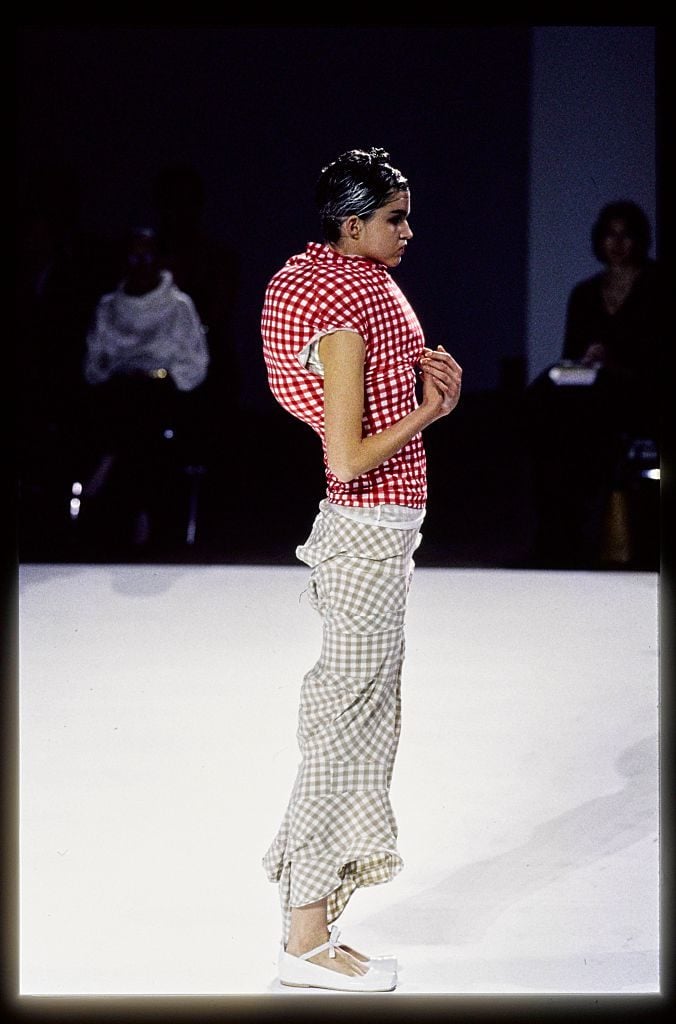
Model walks Comme des Garcons’ Spring 1997 Runway collection. Photo by Guy Marineau/Conde Nast via Getty Images.
So much in fashion is about remaking the female form, about celebrating it or sexualizing it or perfecting it. Kawakubo not only avoids those types of cliches, she explodes them. She wants to deform the female form—to obscure it beyond recognition.
That collection marked the first time I realized that fashion could do more than just prettify a person. It could also endow them with a profound ugliness. It was the first time I realized that fashion could be about more than just clothing, but also about form and movement, ideas made manifest in cloth. The fact that these ideas were hung on bodies was, frankly, beside the point.
Imagine, at a time of Christian Lacroix’s opulence and Thierry Mugler’s severe-chic, a small woman who shows threadbare creations of black on a runway, and has the gall to call these tattered rags fashion. What an affront that must have been to these puffed-up creators! No wonder the fashion world was wary of Kawakubo.
But it’s not all doom and gloom. Consider the wildly popular fall 2012 collection, made of two-dimensional doll’s dresses in Kodachrome colors, which was childlike in its sense of gleeful discovery. Or a recent men’s collection, with its soft pajama shapes and Easter candy colors, adorned with kindergarten arts and crafts pom-poms and topped off with naughty leather bunny ears, which is both humorous and unique. Her work can be as witty as it is profound.
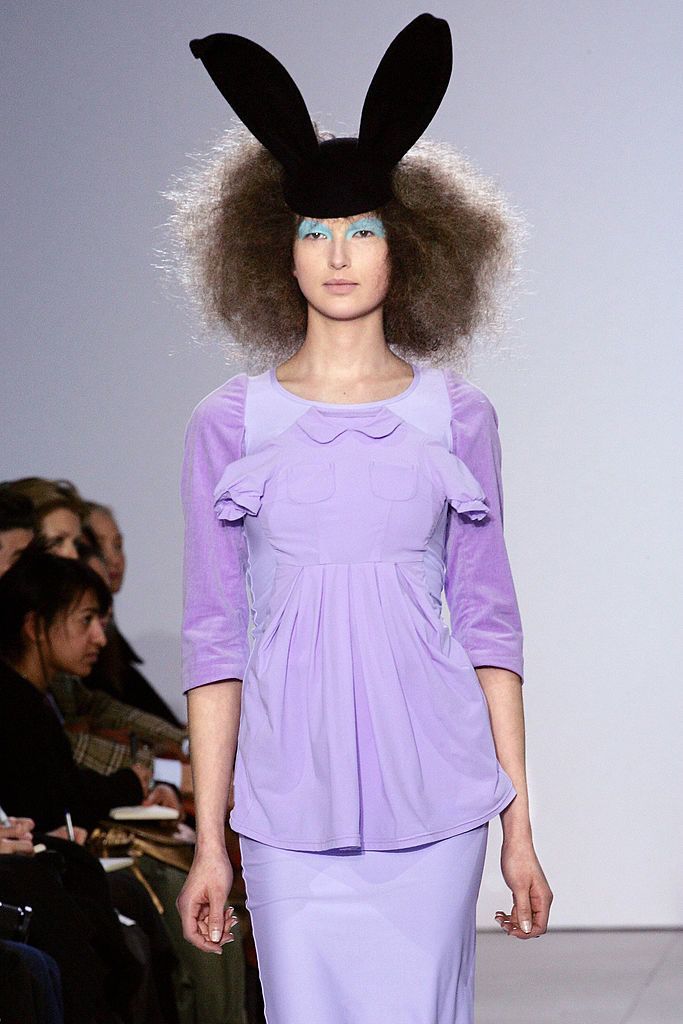
Comme des Garcons’ Autumn/Winter 2007/2008 ready-to-wear collection show in Paris. Pierre Verdy/AFP/Getty Images.
Kawakubo’s clothes rarely include traditional visual references, homages to film or celebrity, or other obvious antecedents. Her collections—which she presents silently and stone-faced each season—are instead accompanied by gnomic statements that make it even more difficult to divine the meaning behind the clothing. It can be confounding at best and infuriating at worst. (In an official statement about the Met’s exhibition, Kawakubo says that one of the “modes of expression” that is most important to her is “absence of intent.”)
If all this avant-gardism sounds niche, that’s because it is. But Kawakubo has managed to make it a profitable venture, too. She’s brought in other designers to help expand the business—notably the Japanese designer Junya Watanabe and, recently, the Russian streetwear phenom Gosha Rubchinskiy. Her multi-brand retail concept stores, Dover Street Market, located in London, New York, Tokyo and Beijing, have been commercial blockbusters. The company pulls in an estimated $280 million in revenue annually, according to Business of Fashion.
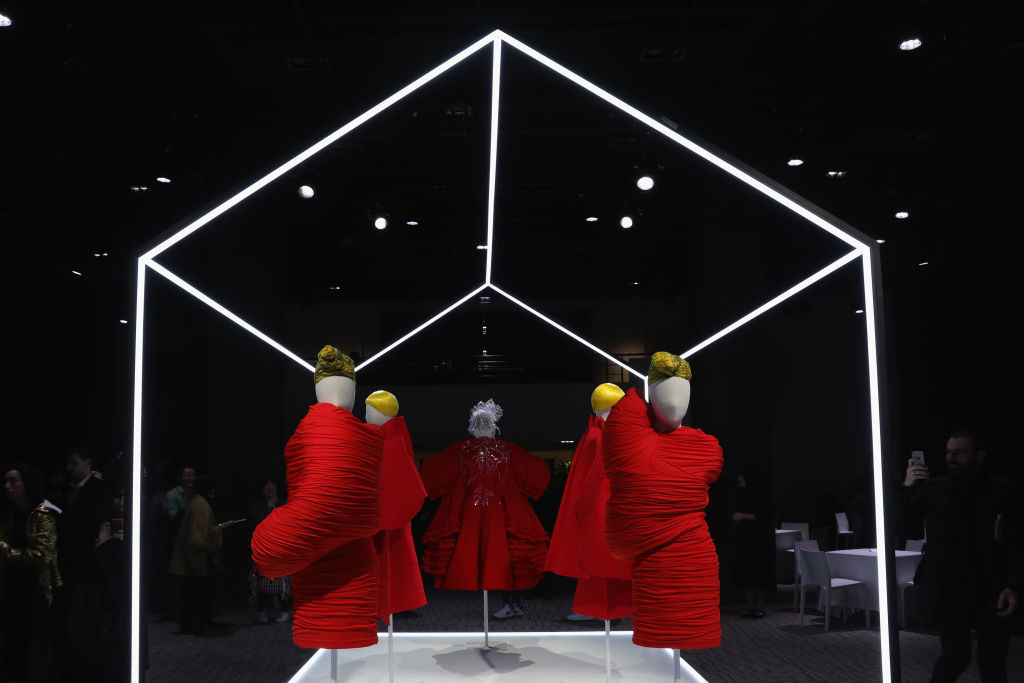
A preview of Rei Kawakubo’s Met show on March 5, 2017 in Paris. Photo by Vittorio Zunino Celotto/Getty Images.
Kawakubo enters the Met at a time when fashion exhibitions are multiplying at museums around the world. The public clamors to see them, corporate sponsors like them, and the fashion world loves to see its wares hung next to great works of art. In these shows, fashion is often presented as a decorative barometer of the mood of the world. But in many ways, Rei Kawakubo’s work frustrates that definition of fashion. Because Kawakubo’s work has moved so fully away from preconceived ideas of apparel—turning jackets and dresses into something ridiculous and sublime—she’s touched the edges of the art world.
When the show opens on May 4, Kawakubo will likely be praised as a mix of poet and provocateur. But it’ll be hard to know whether she cares or not. For Kawakubo, being a renegade is nothing new.
Rei Kawakubo / Comme des Garçons: Art of the In-Between, at the Metropolitan Museum of Art, New York, May 4-September 4